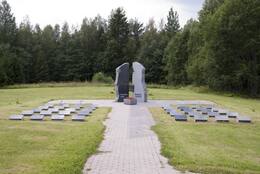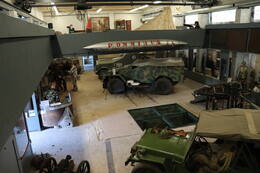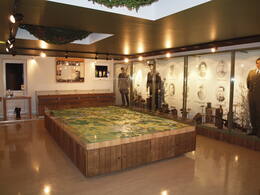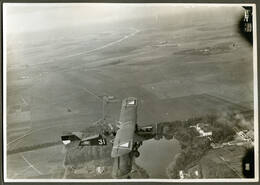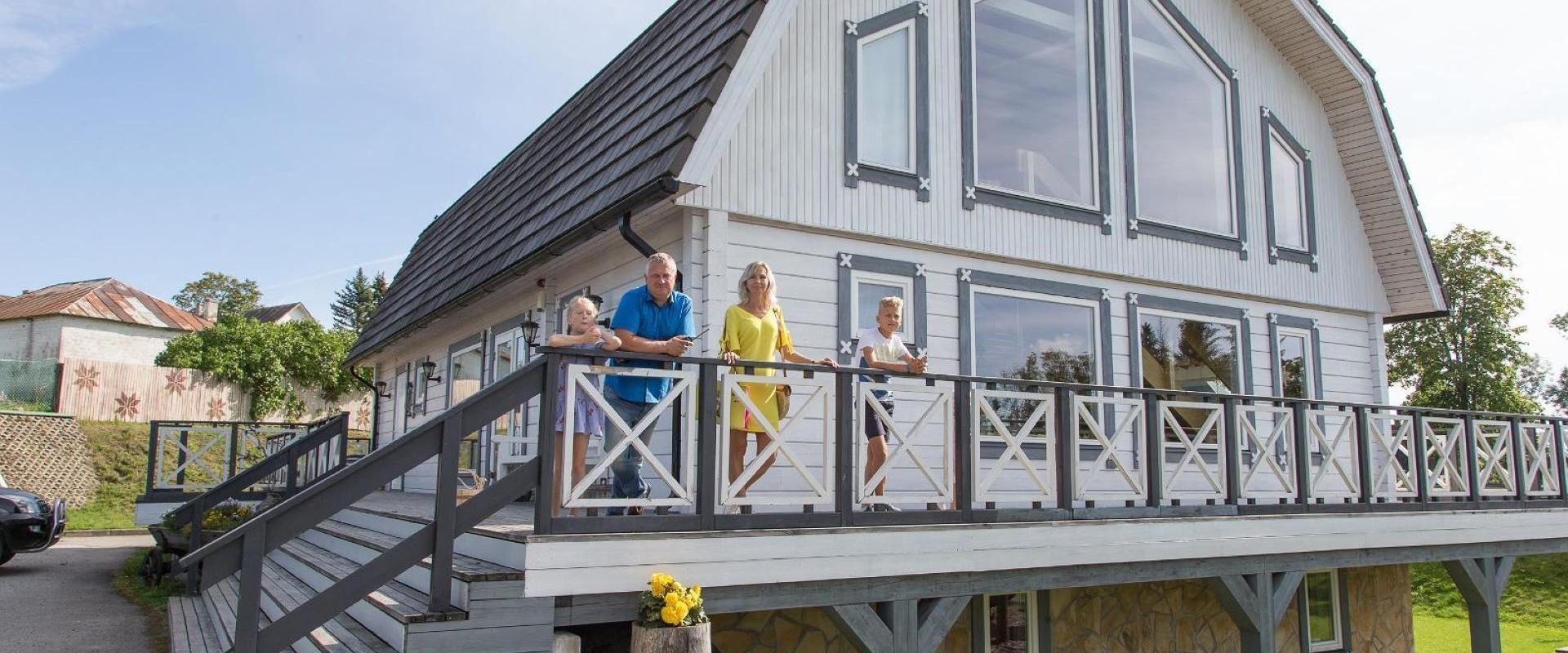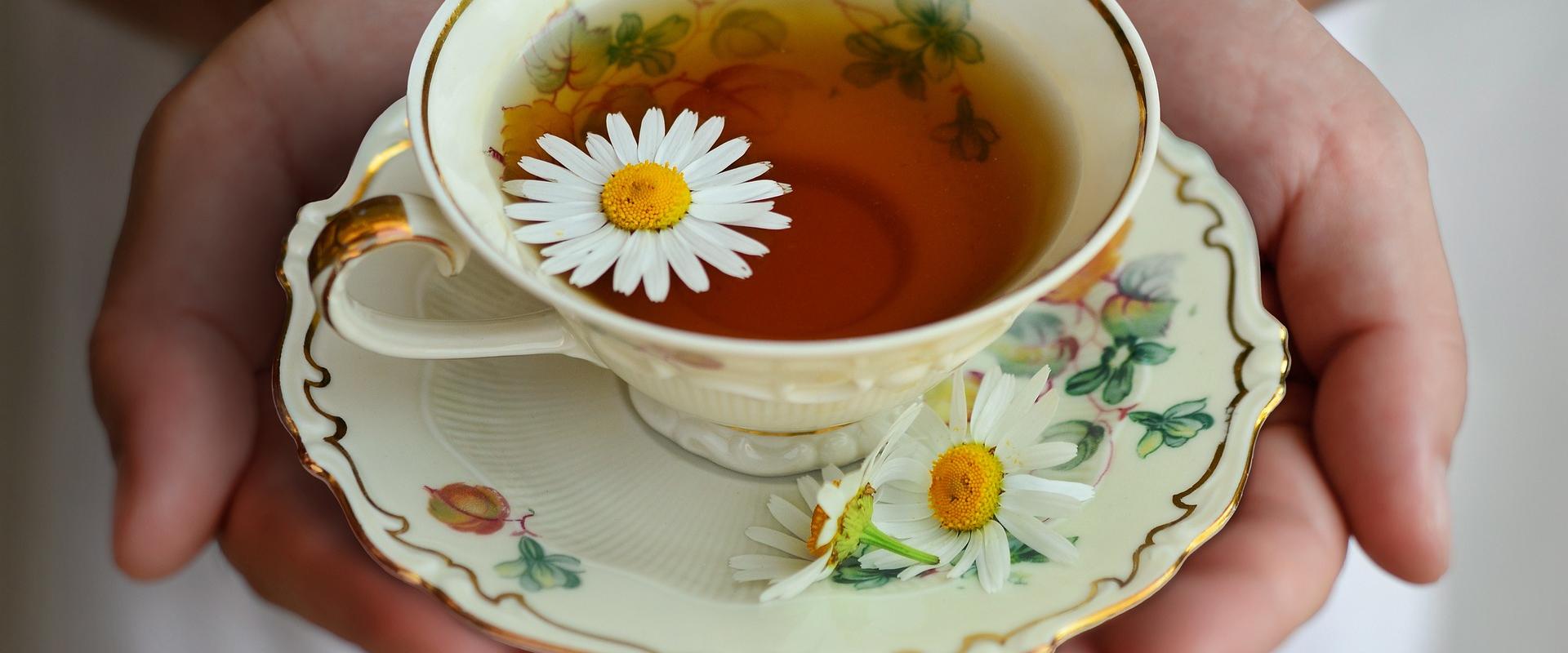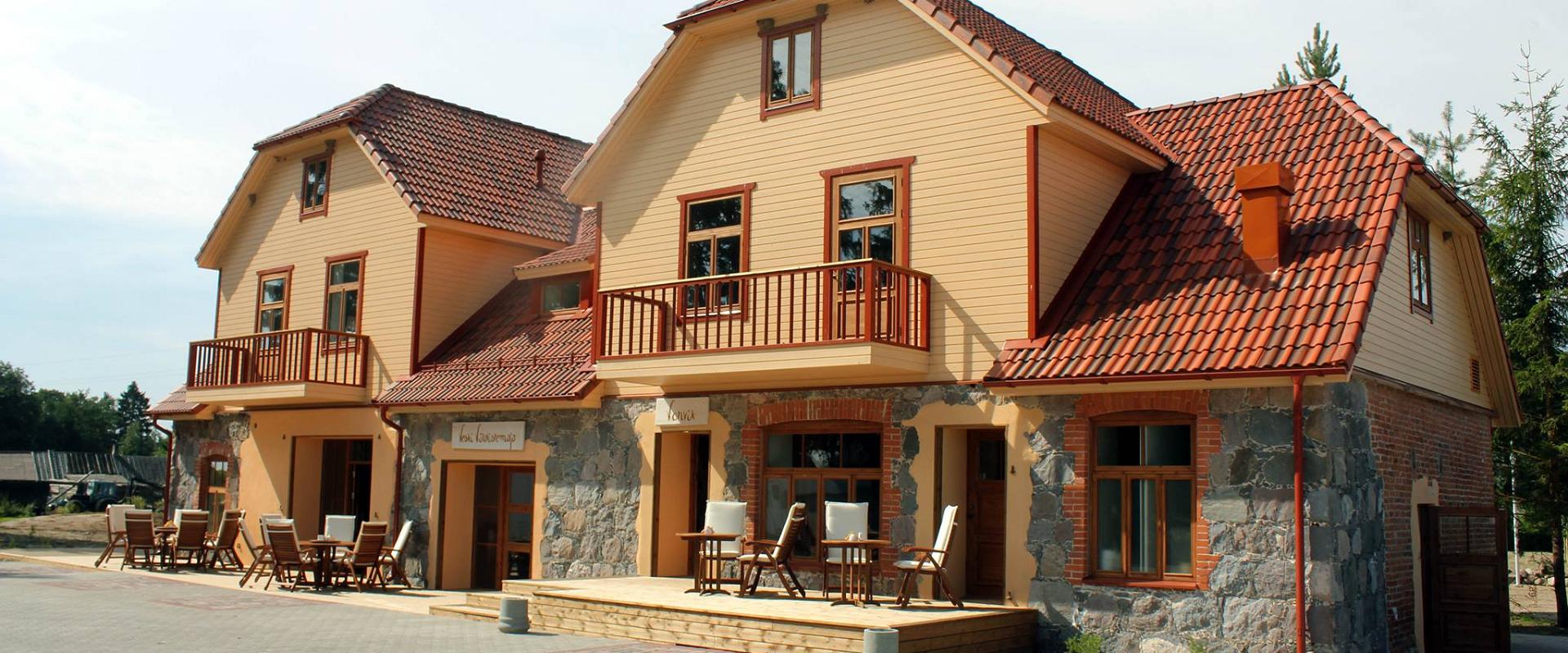Didžioji kelionė per sieną – karinis Latvijos ir Estijos nepriklausomybės 100-mečio paveldas
Diena 11.
230 km
Narva–Avinurme–Mustvee–Jõgeva–Tartu
Praktinė informacija
- Driving distance: ~230 km
- It is recommended to make a stop at Estonian/Russian border-lake Peipsi, in Kauksi. There are 30 km of sandy beaches by the lake.
- Opening hours and ticket information for Jõgewa Military Museum www.pommiauk.ee/muuseum.php. Guided tours by advance booking.
- Opening hours and ticket information for the Museum Room of the Finnish Boys in Äksi www.visitestonia.com. Groups visits and guided tours should be booked in advance.
- For visiting KGB Cells Museum please check opening hours and ticket information www.visitestonia.com/en/kgb-cells-museum. Group visits with guide should be booked in advance.
Lankytinos vietos
Avinurmės mūšio memorialas
This memorial is situated close to the church and graveyard in the small borough of Avinurme.
The battle took place in 1944 and forced Estonians to fight one another: the battalions of the 27th and 921st Estonian Rifle Regiments on the Soviet side, and the Estonian Waffen Grenadier Division of the SS and units of the 300th Special Infantry Division on the German side.
In 1964, a monument was placed in front of the church in Avinurme reading: "Glory to the heroes who fell in Avinurme for the liberation of our homeland. 20. September 1944".
Sculpture of the Mourning Maiden. Mass grave of people killed in World War II
The statue of the Mourning Maiden, which marks a mass grave of people killed in World War II, is located in the town of Mustvee by Lake Peipsi.
In 1944, Red Army soldiers killed in Mustvee and the surrounding woods were buried here, in the abandoned Old Believers' cemetery. Soviet Army sources state that 264 Soviet soldiers killed in World War II are buried in the mass grave.
On 8 May 1973, a bronze statue sculpted by Elmar Rebane entitled ‘Mourning Maiden’ was placed here, along with a tombstone marking the mass grave.
Jegevos karo muziejus
This museum is situated by the Tartu-Jõgeva-Aravete road in Jõgeva.
It grew out of an exhibition entitled ‘1900-1945’ showcasing exhibits gathered and curated by military history enthusiasts. The museum opened in 2012. It displays local archaeological findings, military and civilian memorabilia, significant cultural exhibits and a wide range of weaponry. It also presents the history of military conflicts from the Stone Age through to the modern era. The museum has a study room for educational programmes, such as “Don't touch bombs, children!” for schools.
The museum reserves a special place for an exact copy of an Arsenal-Crossley armoured car from 1927, which was researched and built by museum staff in 2018 for the centennial celebrations of the Republic of Estonia.
Suomių vaikinų kambarys
This museum room is situated in Saadjärve Nature Centre in the small borough of Äksi.
It was opened in 2002 on behalf and with the support of the Finnish Boys Association, Tartu Municipal Government and the Finnish state.
It provides an overview of the battles in Finland and Estonia in which the Finnish Boys participated during World War II. Here you will see a scale model depicting the battles fought in Jõgeva and Tartu counties and the uniforms, equipment, armaments, military decorations, personal belongings and photos of the Finnish Boys. The bunker is also open to visitors.
Free admission.
KGB Cells Museum
This museum is situated on the corner of Riia and Pepleri streets in Tartu.
It is a branch of Tartu City Museum. The museum is located in the infamous grey building on Riiamägi Hill that the KGB used as their base of operations in Tartu during the 1940s and 1950s. The basement here was used as a pre-trial detention centre for political detainees. Now, many years later, it is open to visitors. Some of the cells (including those used for solitary confinement) and part of the corridor have been restored to their original appearance. The exhibition in its former jail cells provides an overview of World War II, the post-war anti-Soviet resistance in Estonia, the crimes committed by the communist regime and the conditions in the detention centre. The idea of opening the museum came from members of a former underground student resistance group in Tartu called Blue-Black-White, who discovered upon visiting their former cells that the basement had been abandoned and that it would not be very difficult to restore the former look of the jail. The museum was officially opened on 12 October 2001.
Radi karinis aerodromas
This airfield is a former air base on the north-eastern outskirts of Tartu.
On 14 April 1912 Russian pilot Sergei Utochkin made history by completing the first motorised flight in Estonia, in a Farman biplane above Raadi Manor. Baron Liphart, the lord of the manor, had his farmland converted into a runway in summer 1914. During the interwar period of Estonian independence, the 2nd Squadron of the Aviation Regiment was stationed in Raadi. During the 1950s and 1960s the airfield was refashioned into one of the largest air bases in Eastern Europe, at which strategic long-range bombers were stationed. The last landing in Raadi is believed to have taken place in 1996. Plans for renovating the airfield were abandoned in 1999. The airfield has since been decommissioned.
It is situated next to Raadi Manor. In 1922 the Estonian National Museum was established in the manor, which had been expropriated from the Lipharts in 1919. Aerial bombings in August 1944 set fire to the manor, and it burnt down. In 2016 the new building of the Estonian National Museum was opened in Raadi, located at the end of a former runway. The building, which is 350 metres long and rises from the ground, gives the impression of being an extension of the runway.
Vietos pavalgyti
Avinurme Woodworking Centre
Avinurme Woodworking Centre is a tourism centre which is home to local craftsmen. It offers the widest selection of woodwork products in Estonia, including dozens of sauna and household items. You can even put your own skills to the test! The centre organises a variety of workshops, from basket-weaving and felting to bread-making, candle-making, painting and more. The cosy coffee shop offers home-made cakes and pastries, fresh bread and other treats. Arranged in advance, it can provide catering for groups of up to 80 people.
Peipsi Teemaja (Teahouse)
On the first floor, we can host family events and other anniversaries.
We also offer accommodation on the second floor.
Peipsi Teemaja is the well-known red house in the centre of Mustvee.
In addition to meals, we have an exciting selection of handicrafts and souvenirs.
Veski Guesthouse Cafe
The cafe has a nice interior and a children’s play area and is located next to the Jõgeva–Mustvee highway, in Kantküla. We offer a delicious buffet on every working day. In the summer, we also have an a la carte menu.
Our meals are mostly made from seasonal local raw ingredients. Here, you can enjoy your meals inside or, if the weather is good, on the outdoor terrace.
You can also organise your anniversaries, thematic events, and seminars here.
We also offer accommodation on the first floor of the cafe.
Juulamõis Local Heritage Café
Juulamõis Local Heritage Café is a small Green Key eatery in Vooremaa. Our wish is to offer people a cozy atmosphere and healthy food!
We offer local food, tell regional legends, and introduce guests to the products of small producers. For those who prefer vegetarian food, there is a vegetarian menu; for families, there is a large family platter for sharing. There is an herb garden on the edge of the café terrace and a haystack for lounging. For those eager to learn, we offer workshops related to Estonian food.
We put together local food baskets for a picnic or as a gift.
The café is a good stopping point on your journey from the Ice Age Centre to Elistvere Animal Park and Vudila Playland.
In Tartu visittartu.com




